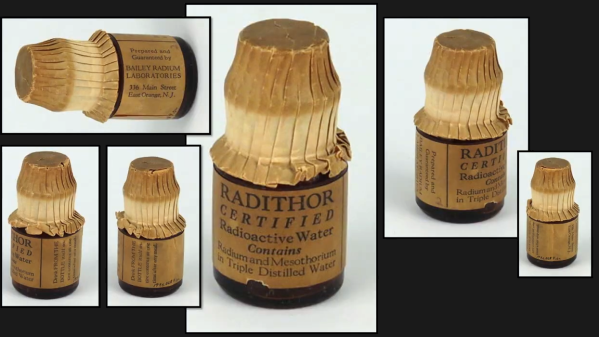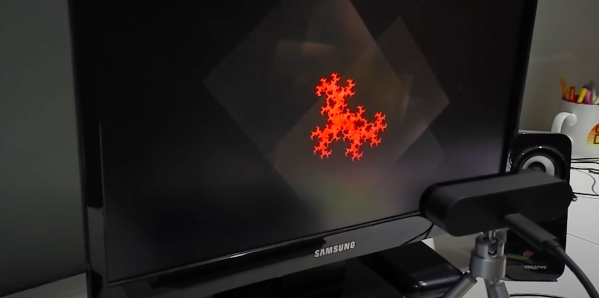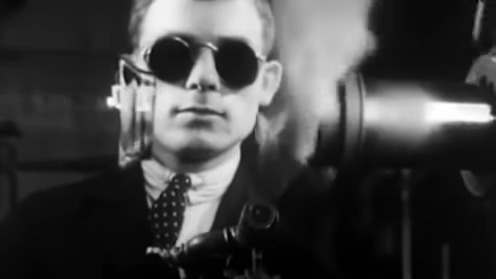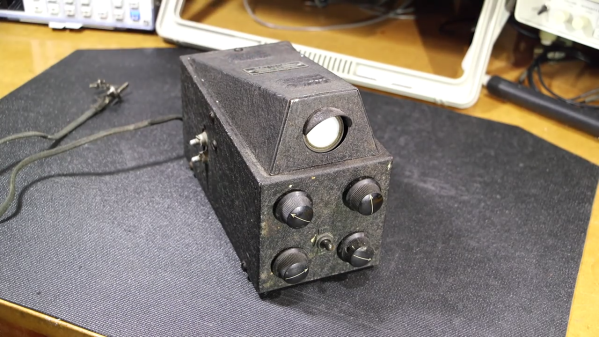Take a little time to watch the history of Radithor, a presentation by [Adam Blumenberg] into a quack medicine that was exactly what it said on the label: distilled water containing around 2 micrograms of radium in each bottle (yes, that’s a lot.) It’s fascinatingly well-researched, and goes into the technology and societal environment surrounding such a product, which helped play a starring role in the eventual Food, Drug, and Cosmetic Act of 1938. You can watch the whole presentation in the video, embedded below the break. Continue reading “Radioactive Water Was Once A (Horrifying) Health Fad”
1930s5 Articles
Retrotechtacular: A DIY Television For Very Early Adopters
By our very nature, hackers tend to get on the bandwagon of new technology pretty quickly. When something gee-whiz comes along, it’s folks like us who try it out, even if that means climbing steep learning curves or putting together odd bits of technology rather than waiting for the slicker products that will come out if the new thing takes off. But building your own television receiver in 1933 was probably pushing the envelope for even the earliest of adopters.
“Cathode Ray Television,” reprinted by the Antique Valve Museum in all its Web 1.0 glory, originally appeared in the May 27, 1933 edition of Popular Wireless magazine, and was authored by one K D Rogers of that august publication’s Research Department. They apparently took things quite seriously over there at the time, at least judging by the white lab coats and smoking materials; nothing said serious research in the 1930s quite like a pipe. The flowery language and endless superlatives that abound in the text are a giveaway, too; it’s hard to read without affecting a mental British accent, or at least your best attempt at a Transatlantic accent.
In any event, the article does a good job showing just what was involved in building a “vision radio receiver” and its supporting circuitry back in the day. K D Rogers goes into great detail explaining how an “oscillograph” CRT can be employed to display moving pictures, and how his proposed electronic system is vastly superior to the mechanical scanning systems that were being toyed with at the time. The build itself, vacuum tube-based though it was, went through the same sort of breadboarding process we still use today, progressing to a finished product in a nice wood cabinet, the plans for which are included.
It must have been quite a thrill for electronics experimenters back then to be working on something like television at a time when radio was only just getting to full market penetration. It’s a bit of a puzzle what these tinkerers would have tuned into with their DIY sets, though — the airwaves weren’t exactly overflowing with TV broadcasts in 1933. But still, someone had to go first, and so we tip our hats to the early adopters who figured things out for the rest of us.
Thanks to [BT] for the tip.
Finding Fractals In The 1930’s
The mesmerizing properties of fractals are surprising as their visual complexity often arises from simple equations. [CodeParade] set out to show how simple a fractal is by creating them using technology from the 1930s. The basic idea is based on projectors and cameras, which were both readily available and widely used in television (CRT projectors were in theaters by 1938, though they weren’t in color until the 1950s).
By projecting two overlapping images on the wall, pointing a camera at the resulting image, and then feeding it back into the projectors, you get some beautiful fractals. [CodeParade] doesn’t have a projector, much less two. So he did what any hacker might do and came up with a clever workaround. He made a simple app that “projects” onto his monitor and all he has to do is point an external webcam at the screen. The resulting analog fractals are quite beautiful and tactile. Rather than tweaking a variable and recompiling, you simply just add a finger or move the camera to introduce new noise that quickly becomes signal.
Better yet, there’s a web version that you can play around with right now. For more fractals implemented in hardware rather than software, there’s this FPGA with a VHDL Mandelbrot set we covered.
Retrotechtacular: Philips Factory Tour, Circa 1930s
If you’ve got a half-hour or so to spare, you could do worse than this video trip through a Philips factory in the 1930s.
The film is presented without narration, but from the Dutch title cards and the fact that it’s Philips, we gather that this factory of gigantic proportions was somewhere in the Netherlands. In any case, it looks like something right out of [Fritz Lang]’s Metropolis and turned the rawest of materials into finished consumer products.
Much of the film focuses on the making of vacuum tubes; the sheer physicality of the job is what really stands out here. The upper body strength that the glassblowers had to have boggles the mind. Check out the chops — and the soon-to-be very unfashionable mustache — on the glassblower at the 12:00 mark. And it wasn’t just the gents who had mad skills — the fine motor control needed for the delicate assembly of the innards of the tubes, which seems to be mostly staffed by women, is just as impressive. We were also surprised by the amount these manual crafts were assisted by automated systems.
Especially interesting is the section where they build the luidspreker. Without narration or captions, it’s a little hard to tell what’s going on, but it appears that they used an enormous press to form chips of Bakelite into sleek covers for the speakers, which themselves are super-chunky affairs made from scratch in the factory. We’re also treated to assembly of the radios, packaging of finished products, and a group of dockworkers who clearly didn’t read the “Fragile” labels pasted on the boxes.
One can’t help but wonder if these people had the slightest inkling of what was about to sweep over them and the rest of the world. And if they did, would they even begin to comprehend how much the very products that they were making would contribute to both the slaughter of the coming war as well as to the sparing of so many lives? Likely not, but the film is still an interesting glimpse into the creation of an industry, one that relied very much on craftsmanship to get it started.
Continue reading “Retrotechtacular: Philips Factory Tour, Circa 1930s”
Restoring A 1930s Oscilloscope – Without Supplying Power
We’ve all done it: after happening across a vintage piece of equipment and bounding to the test bench, eager to see if it works, it gets plugged in, the power switch flipped, but… nothing. [Mr Carlson] explains why this is such a bad idea, and accompanies it with more key knowledge for a successful restoration – this time revitalising a tiny oscilloscope from the 1930s.
Resisting the temptation to immediately power on old equipment is often essential to any hope of seeing it work again. [Mr Carlson] explains why you should ensure any degraded components are fixed or replaced before flipping the switch, knowing that a shorted/leaking capacitor is more than likely to damage other components if power is applied.

The oscilloscope he is restoring is a beautiful find. Originally used by radio operators to monitor the audio they were transmitting, it features a one inch CRT and tube rectification, in a tight form factor.
[Mr Carlson] uses his capacitor leakage tester to determine if the main filter capacitor needs replacing – it does, no surprises there – as well as confirming the presence of capacitors potted into the power transformer itself. These have the potential to not only derail the restoration, but also cause a safety hazard through leakage to the chassis.
After replacing and rewiring everything that’s relevant, the scope is hooked up to an isolation transformer, and it works first time – showing the value of a full investigation before power-up. [Mr Carlson] quips, “It really doesn’t have a choice; when it’s on this bench, it’s going to work again”, a quote which will no doubt resonate with Hackaday readers.
[Mr Carlson] promises to integrate the scope into a new piece of test equipment in the near future, but in the meantime you can read about his soldering station VFD mod, or his walk-in AM radio transmitter.
Continue reading “Restoring A 1930s Oscilloscope – Without Supplying Power”
















